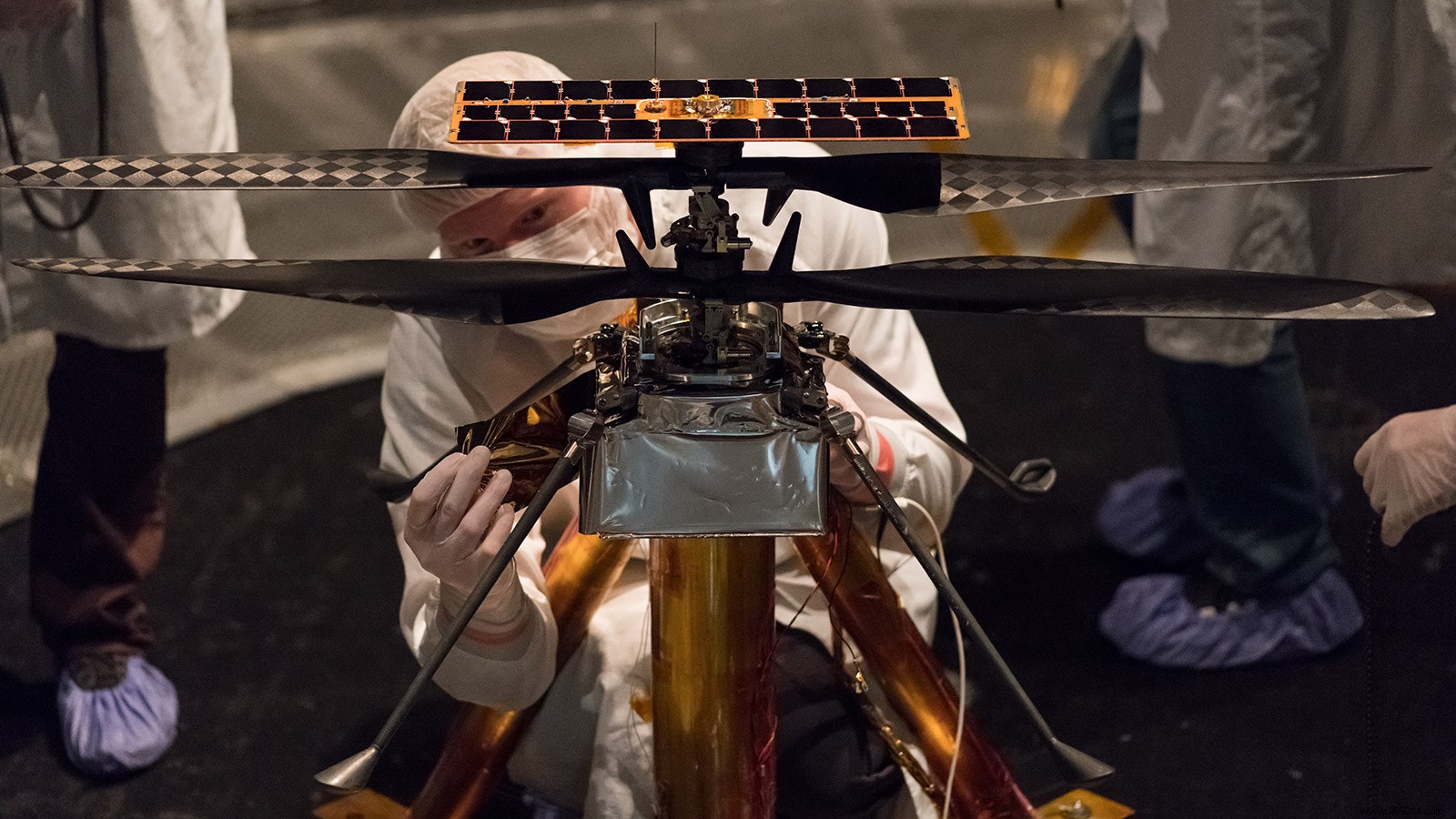NASA engineers have activated the power system of Ingenuity, its small helicopter en route to Mars. This is the first time the rotorcraft has been powered up in the space environment.
On July 30, NASA's Mars 2020 mission was launched. Its objective:to deploy the Perseverance rover on the surface of the red planet in order to search for traces of past life. However, the American agency also intends to take advantage of this mission by testing Ingenuity, its new helicopter. On site, this small rotorcraft will have only one objective, that of successfully flying . If successful, he will then be the first to do so over another planet.
Ultimately, NASA could also rely on it to develop other flying machines of the same type. These future rotorcraft could, for example, be used to carry or recover small payloads . They could also spot safe crossing routes and allow future astronauts to estimate the potential of several otherwise inaccessible exploration areas .
A little over a week after the launch of the mission, NASA engineers wanted to test the performance of the rotorcraft's six lithium-ion batteries. During these operations, which lasted about eight hours, they brought their charge level to 35% thanks to the power supply provided by the rover.
“This was an important milestone, as it was our first opportunity to activate Ingenuity and test its electronics since our launch on July 30 “, explains Tim Canham, of NASA’s Jet Propulsion Laboratory.
“This charging activity shows that we survived launch and so far can handle the harsh environment of interplanetary space “, adds MiMi Aung, also from JPL. “We still have a lot of firsts to do before we can attempt the first experimental flight test on another planet, but at the moment we are all very confident for the future ".
These charging operations will take place approximately every two weeks, until arrival in the Martian system.

As a reminder, Perseverance and its small helicopter are scheduled to land in Jezero crater in February 2021. From the 60th Martian day (or sol), the rover will head for a small airfield dedicated. He can then release Ingenuity. About a week later, the mission leaders will then give themselves thirty days to test its capabilities.
For now, NASA has scheduled five flights. For the first, it will simply be a question of rising vertically to a height of three meters maximum . This first try should last about thirty seconds. For the next four tests, NASA will try to assess the performance of the machine over several hundred meters . It will then be abandoned in place once these operations have been completed.